One of my favorite offerings at Escuela Falcon, my Spanish School, goes beyond the “escuela” (school) part. It’s the field trips. I still remember the excitement of a field trip as a kid…getting a break from school, time to hang out with other classmates, an exciting adventure, and even refreshments!
At Escuela Falcon, these are typically organized in the afternoon following the class schedule, and are led by one of the instructors. Though the instructors may not be official “guides,” they are a wonderful resource in helping translate and interpret exhibits, placards and directions that are offered only in Spanish. Students typically share the cost of transportation and pay their own admission, keeping the cost of the tours low.
Ideally, the purpose of these field trips is to give the students a chance at “intercambio,” or exchange to practice their newly acquired language skills in a casual setting. As a loner and part-time hermit, the social exchange does not interest me as much as the assistance with the logistics. Having someone along who can help navigate the buses, taxis, admission, etc. is a welcome exchange for a little “exchange.”
This post features two recent field trips I enjoyed with my fellow classmates from Escuela Falcon:
La Valenciana Mine and Templo Valenciana
Guanajuato was once a city of great wealth attributed to the silver mines that reached peak production in the late 1700’s. La Valenciana, just outside of Guanajuato City, was Mexico’s largest silver mine. Considered the world’s leading silver extraction center, the area once produced 70% of the world’s silver at its peak, leveling out to 30% over time. The mine is still in operation today. Many of the magnificent mansions, haciendas, and neoclassical style buildings that make Guanajuato feel more European than Mexican were built on the backs of the silver miners, most of whom were indigenous people.
There is a great tour that leads 200 feet down into the mine, complete with dioramas and hard hats. If only I spoke Spanish. Claudia, an instructor from Escuela Falcon comes along with us. We hold back at the end of the group while she translates some of the highlights of the tour. We learn that 10,000 people have worked in this mine. The most primitive of mining methods was to heat the rock, then blast it with water until the rock exploded. Judging from the expressions of the tour participants, there are tales of a grim life of the miners, complete with abysmal working conditions and a list of diseases that plagued the miners. I am spared the gruesome details by my lack of the language, and can’t get out of there fast enough. I don’t suffer from claustrophobia….until I can’t breathe.

This instrument was used to blast water onto the heated rock, thereby causing it to explode, exposing the vein of metal.
One bit of folklore comes out of the tour. Legend has it that many men failed in repeated attempts to extract precious metals from La Valencia mine. Years passed with no success, until a miner who was a bit of a gambler came to town. He supposedly made a deal with Saint Cayetano that if he could be allowed to find a vein of gold, he would build the largest church in the land in his honor, ergo the Iglesia of San Cayetano, aka the Templo La Valenciana (1765-1788,) considered to be one of the greatest masterpieces of the Mexican Churriguesresque style. Named for the Spanish architect Churriguera, this Spanish Baroque style is known for its gaudy, overly decorated facades and altars.

Just about the time I think “You’ve seen one Mexico church, you have seen them all,” I enter La Valenciana. Not one but THREE floor to sky-high ceilings, every inch decorated in gold leaf. Seeing the inside of the church is worth the taxi ride to La Valenciana Mine alone, even if you don’t go down into the mine shaft.

Beautiful Templo La Valenciana lost a bell tower due to deterioration. Hopefully UNESCO can protect the other one.
Ex-Hacienda San Gabriel Barrera
The following weeks activities include a field trip to Ex-Hacienda San Gabriel Barrera, a former hacienda built in the 17th century. Yet another example of wealth acquired from the extraction of silver from Guanajuato’s hills, this is one of four “ex-haciendas” that were owned by descendants of the La Valenciana mine family of wealth.
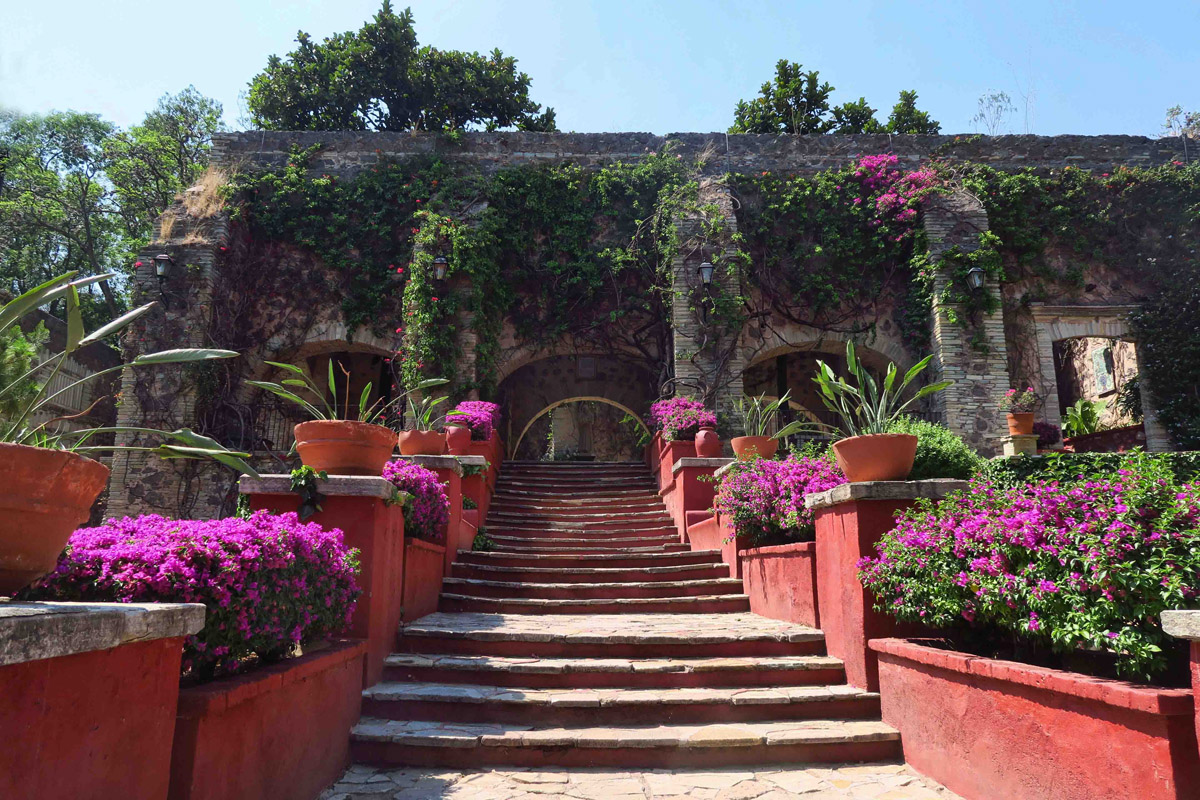
The hacienda was made up of three parts; the house and office, the chapel for religious services, and materials used for ore mining, such as wheels, aqueducts, ponds and stables.
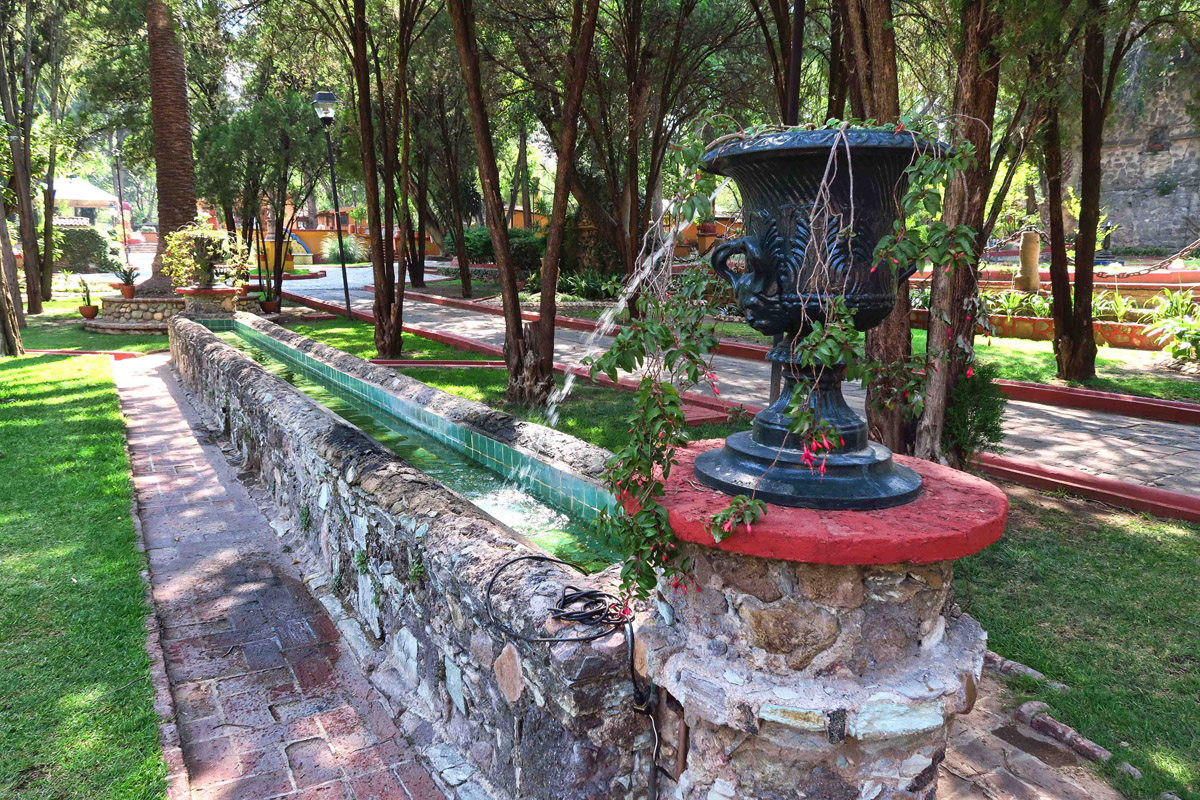
These long trough-like fountains are believed to have been for watering the horses who were used in mining the ore.
Not so much of a historical tour, this is more about wandering through the tranquil, lush green gardens…seventeen of them, in fact, each with a different theme; Oriental, Roman, English, Cactus just to name a few. I could easily sit listening to the many fountains where water cascading over the antique sculptures creates music that can only be eclipsed by the birdsong coming from the giant palm and eucalyptus trees overhead.
Inside the hacienda is a two-story museum containing period furnishings from the 17th Century. As I walk the halls admiring the grandeur, the craftsmanship of the recessed joints in the thick wooden doors, and the artwork and tapestries covering the walls, I ponder what the US equivalent would be of the price of admission to a mansion and gardens such as this, which is only 30 Pesos, about a buck fifty.
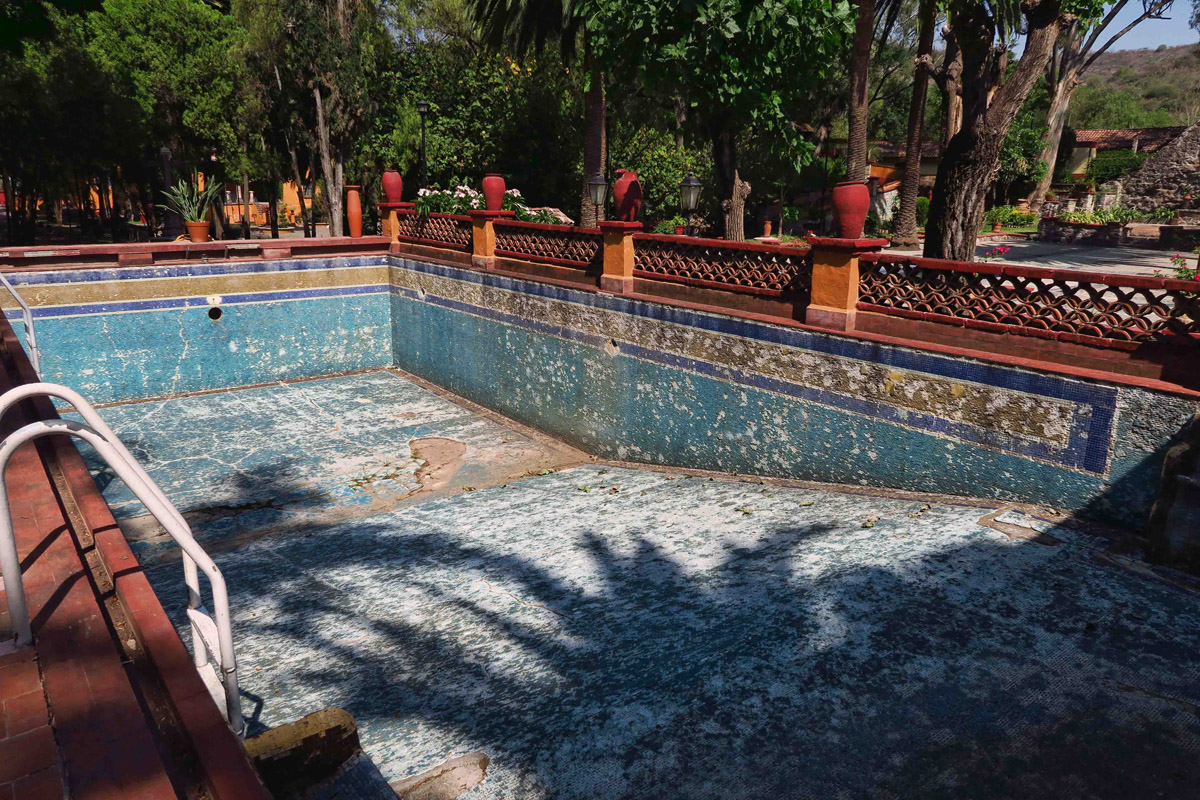
Sadly, this beautiful mosaic swimming pool, complete with underwater benches (outside of photo) has fallen in disrepair.
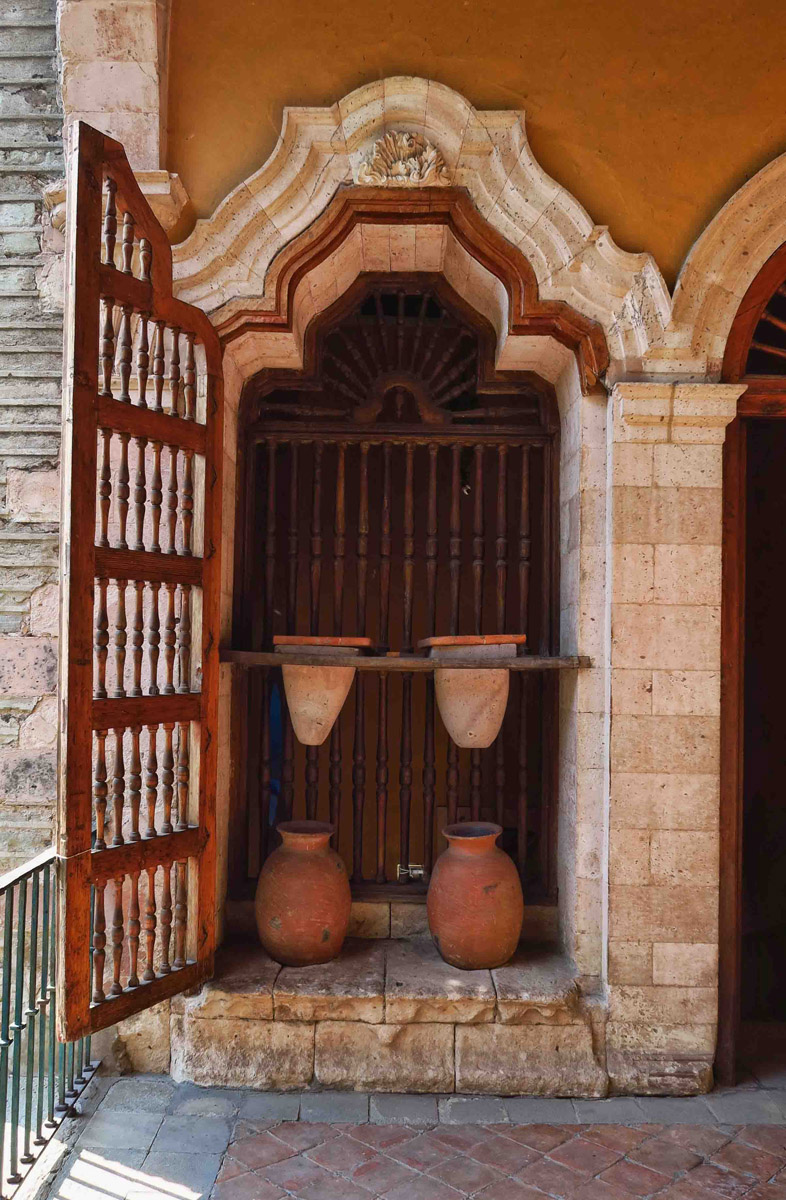
There was much deliberation among classmates about the use of this structure. We finally agreed it must have been planters, with pots below to catch the water as it seeped through the porous vessels.
Not only did I wander this venue alone save for my three other classmates, we capped off the afternoon field trip with some really cold beers in the Hacienda Café. School field trips are a whole lot more fun than they used to be!
Segundo Dia in Classe de Cocina
On our second day in cooking class at Escuela Falcon, we make Chili Rellenos stuffed with cheese. I am surprised by the simplicity of this recipe as we roast the poblano peppers right over the open flame, then pop them into a bag to steam, then immerse in water to slip the peeling off the large, flat peppers.
The secret to the delicate coating is separating the egg white from the egg yoke, beating the egg whites until they cling to the bowl when turned upside down, then slowly folding the yolk into the egg white mixture before coating the cheese-filled peppers.

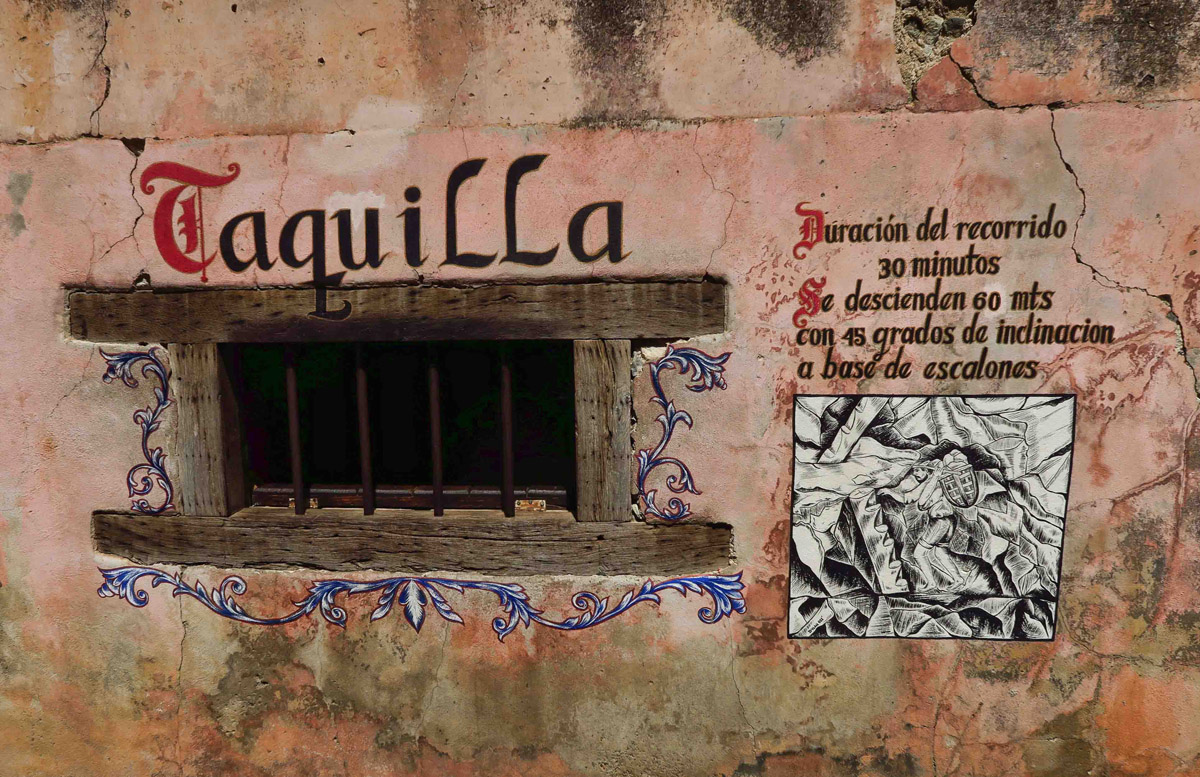

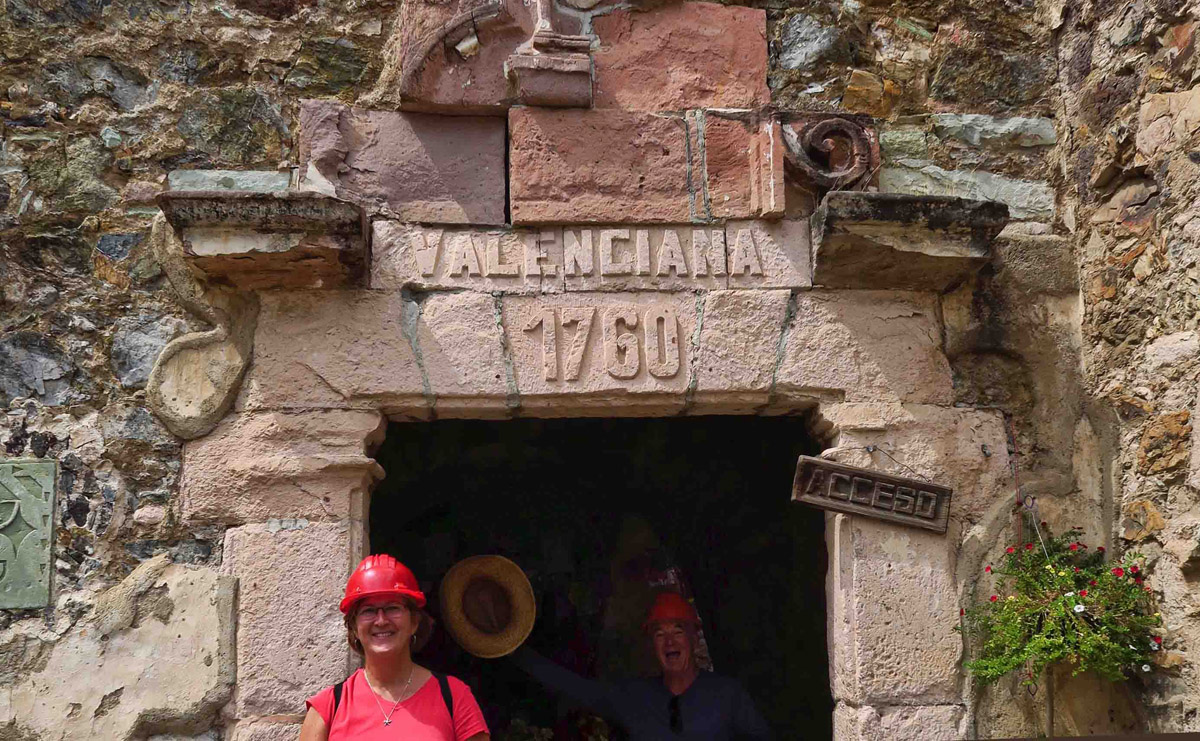

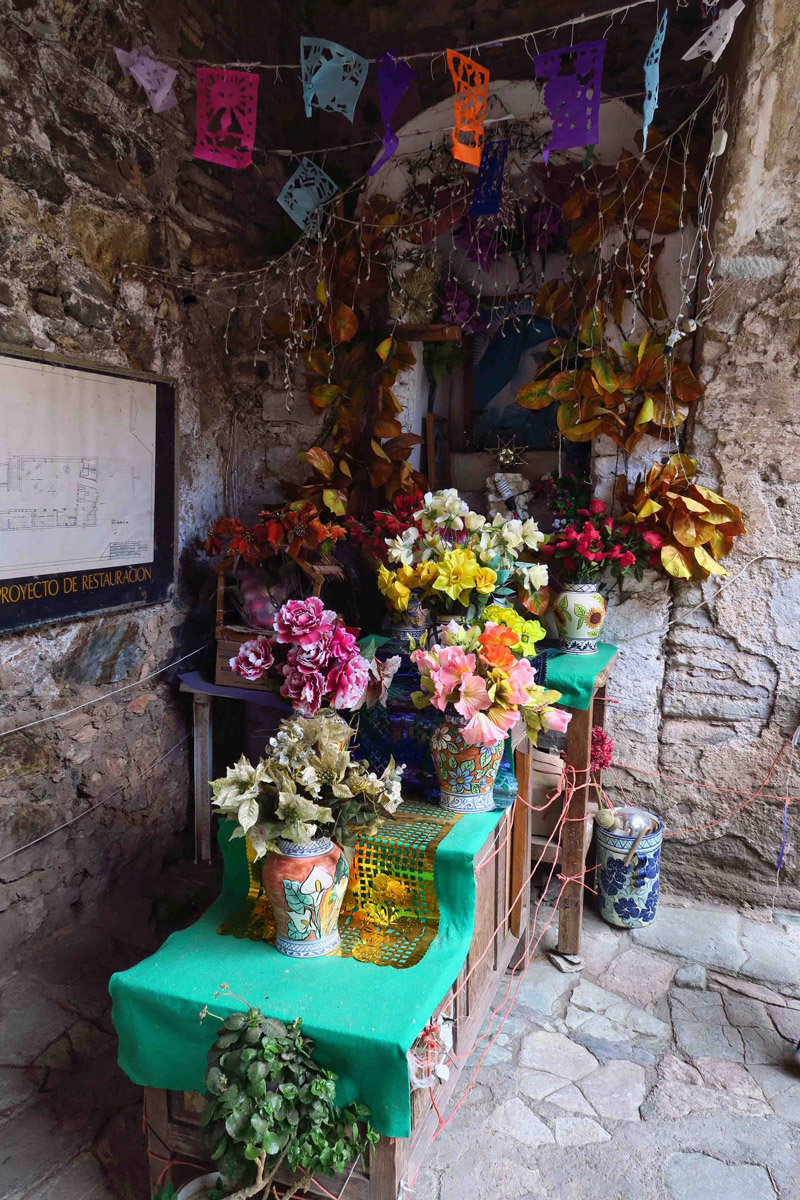
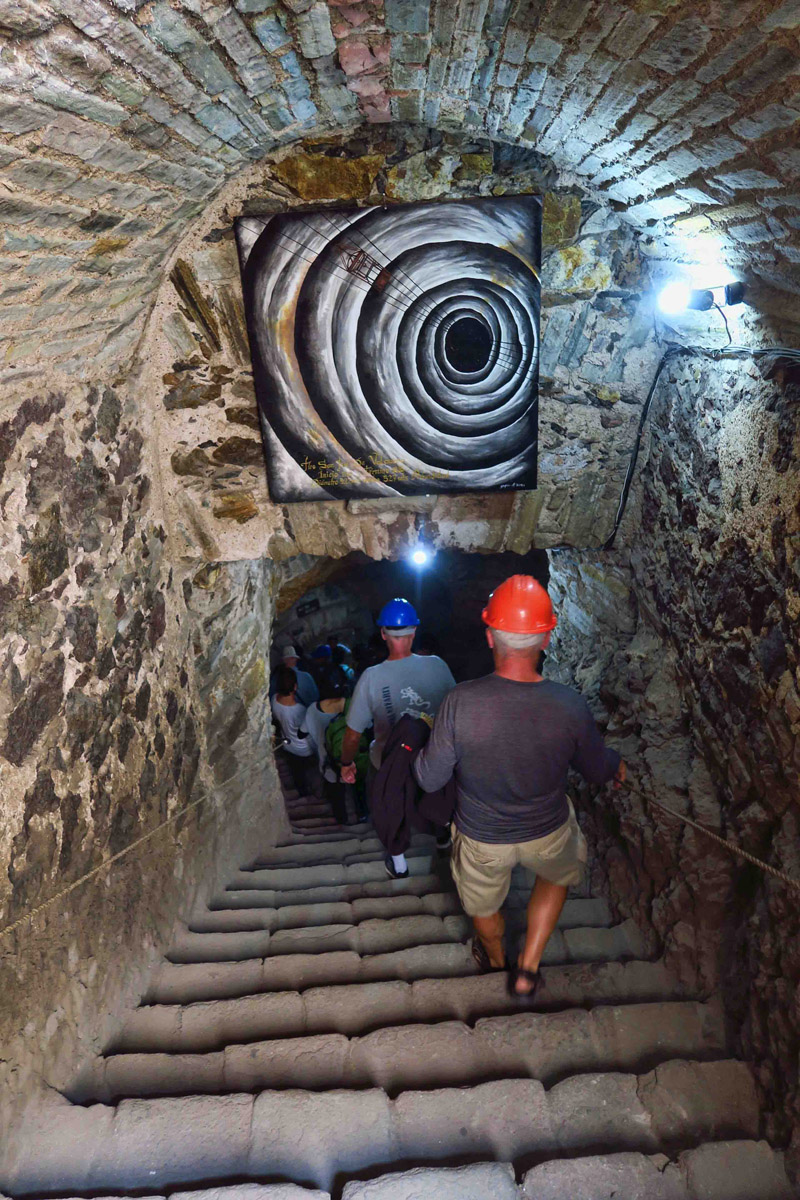










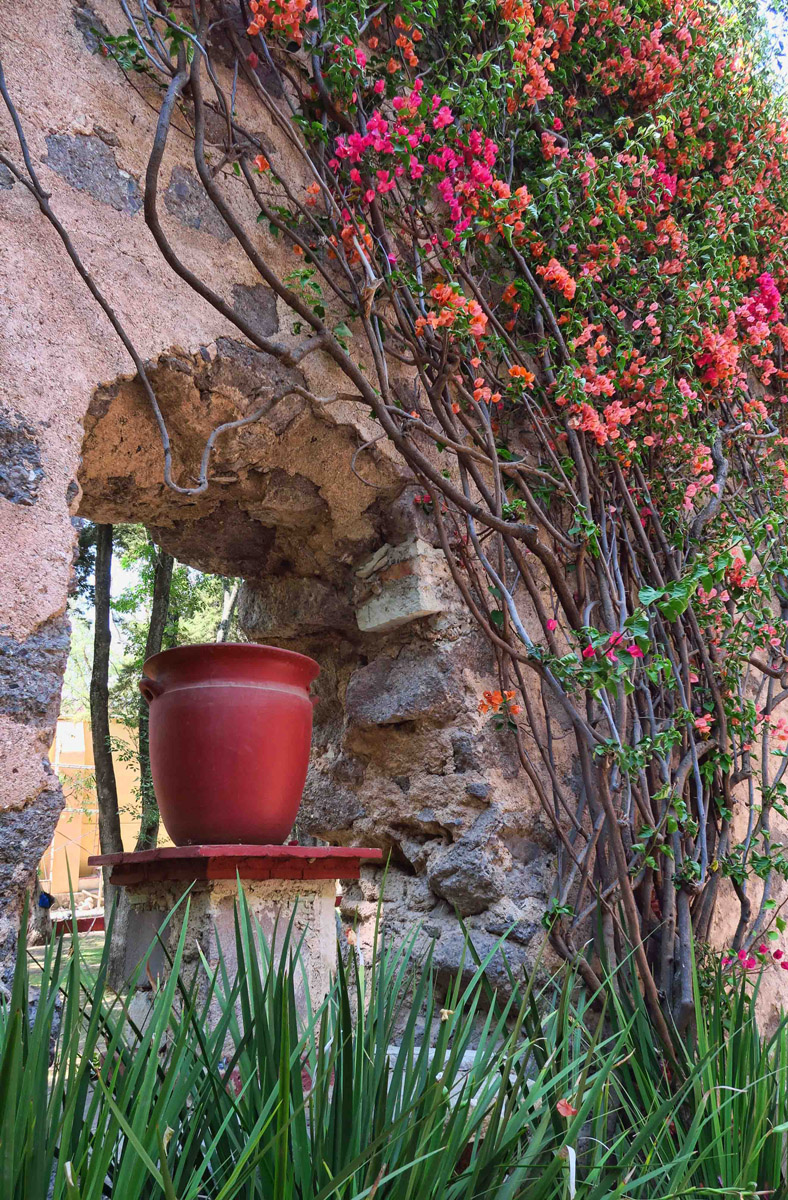
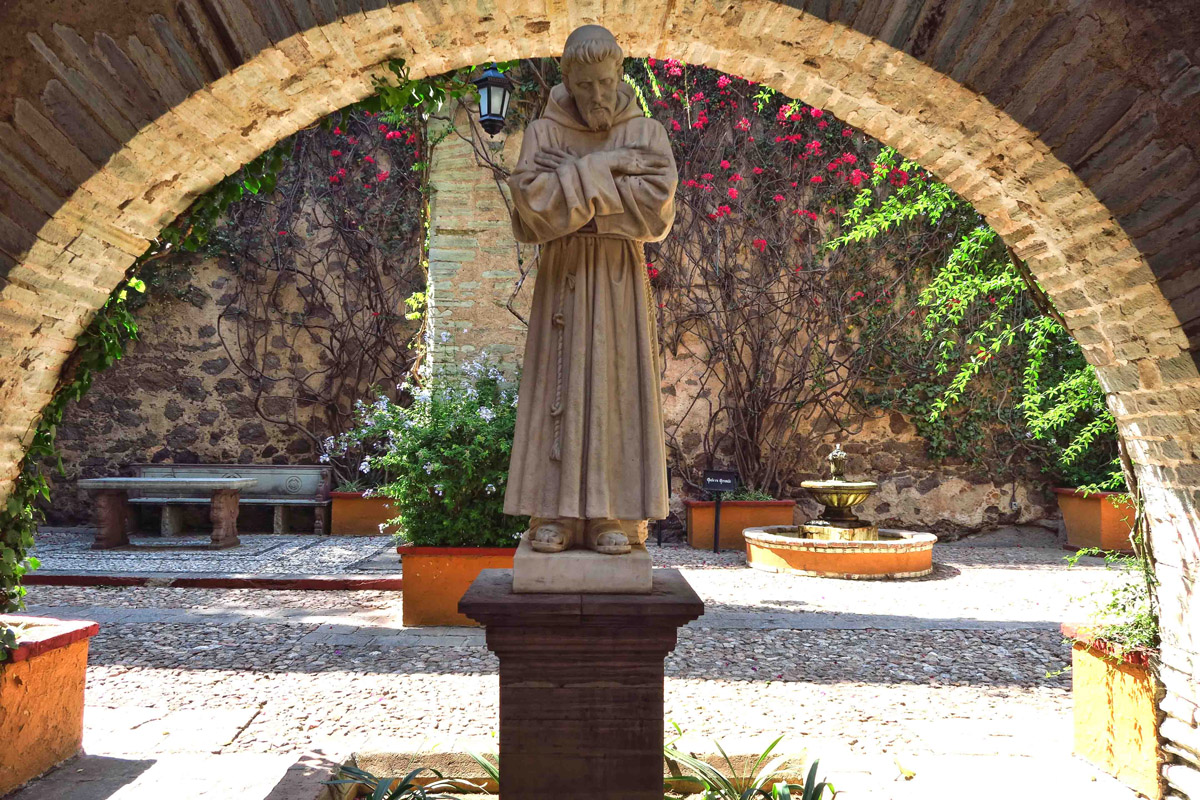

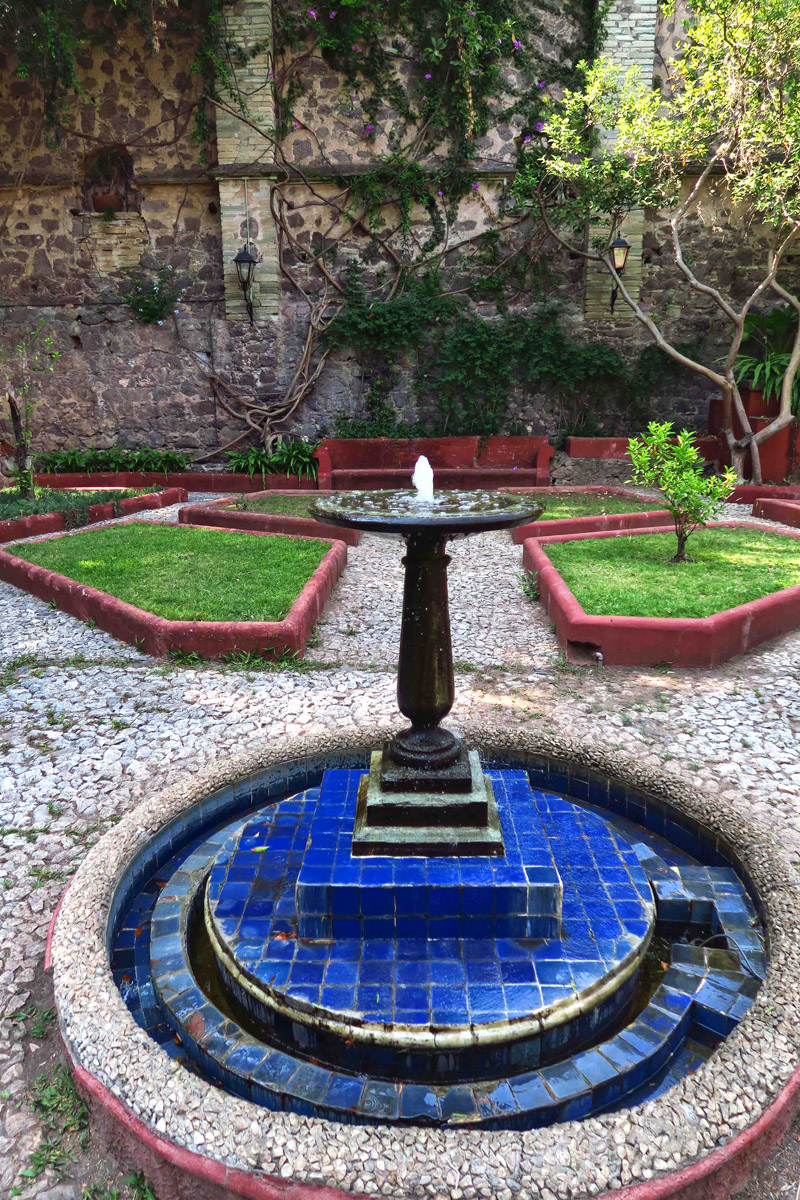
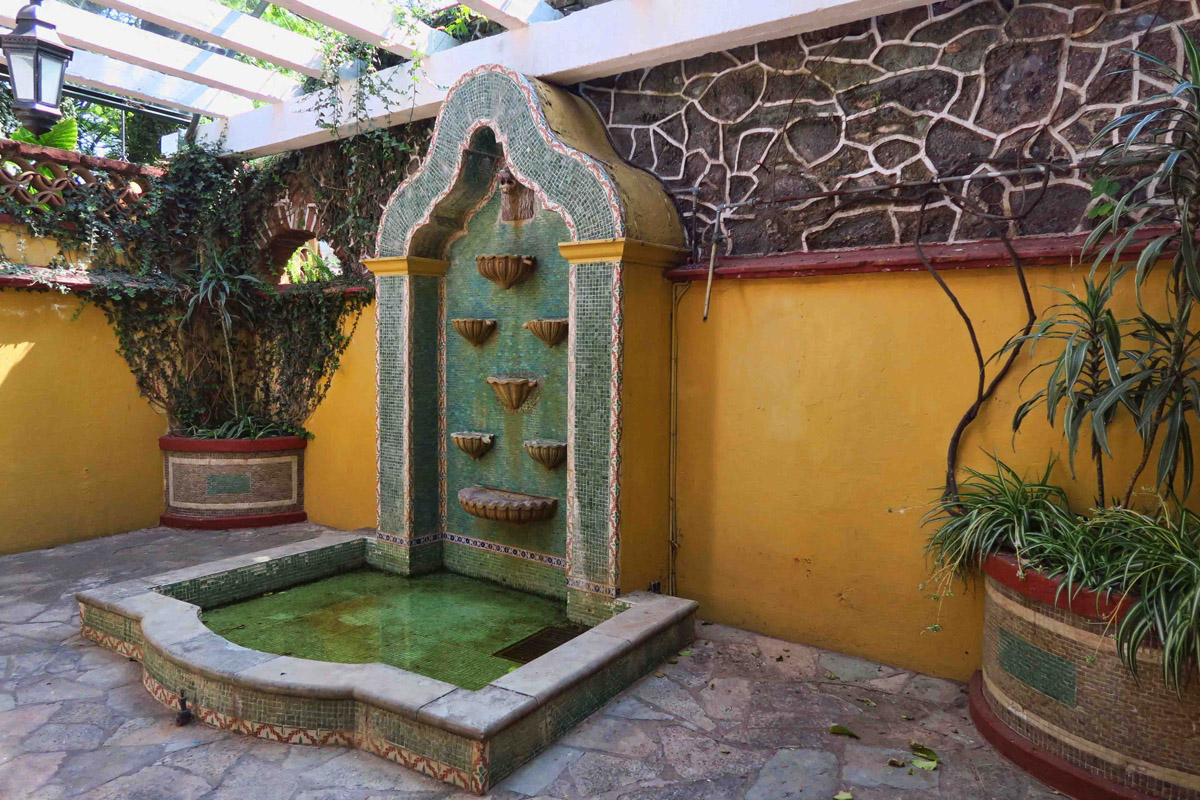

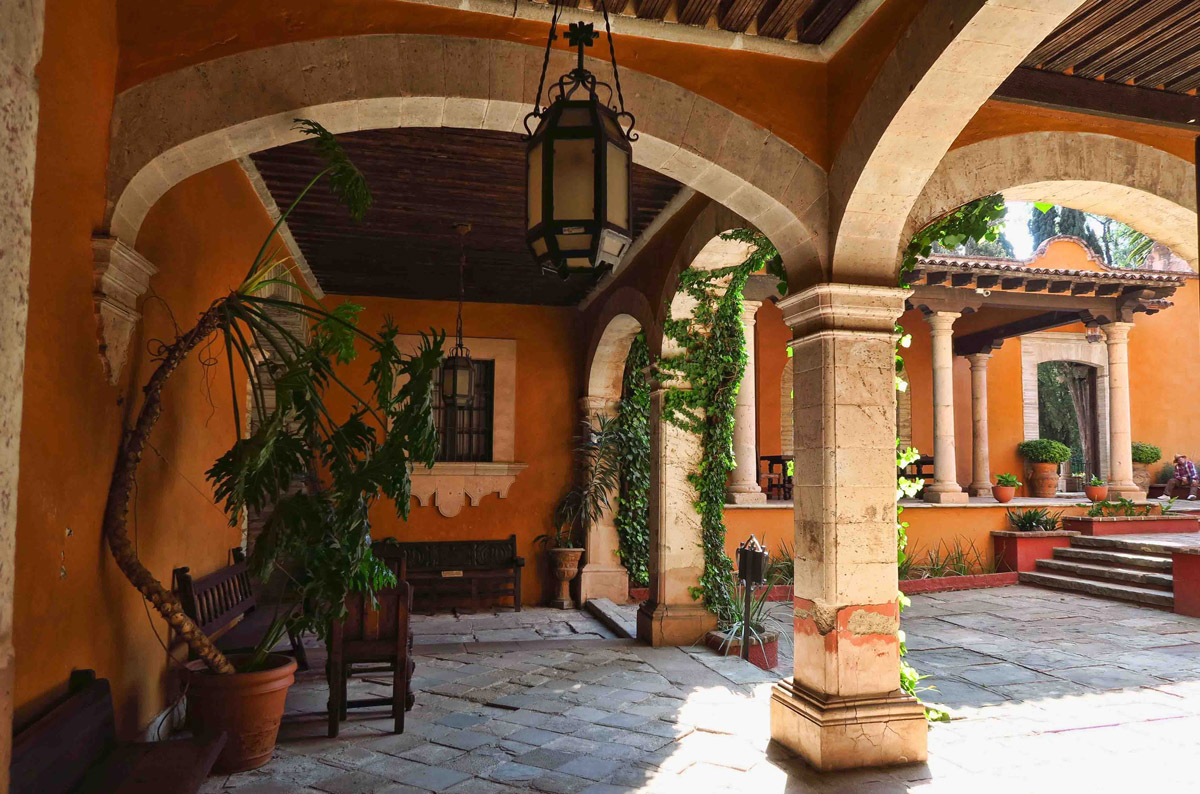
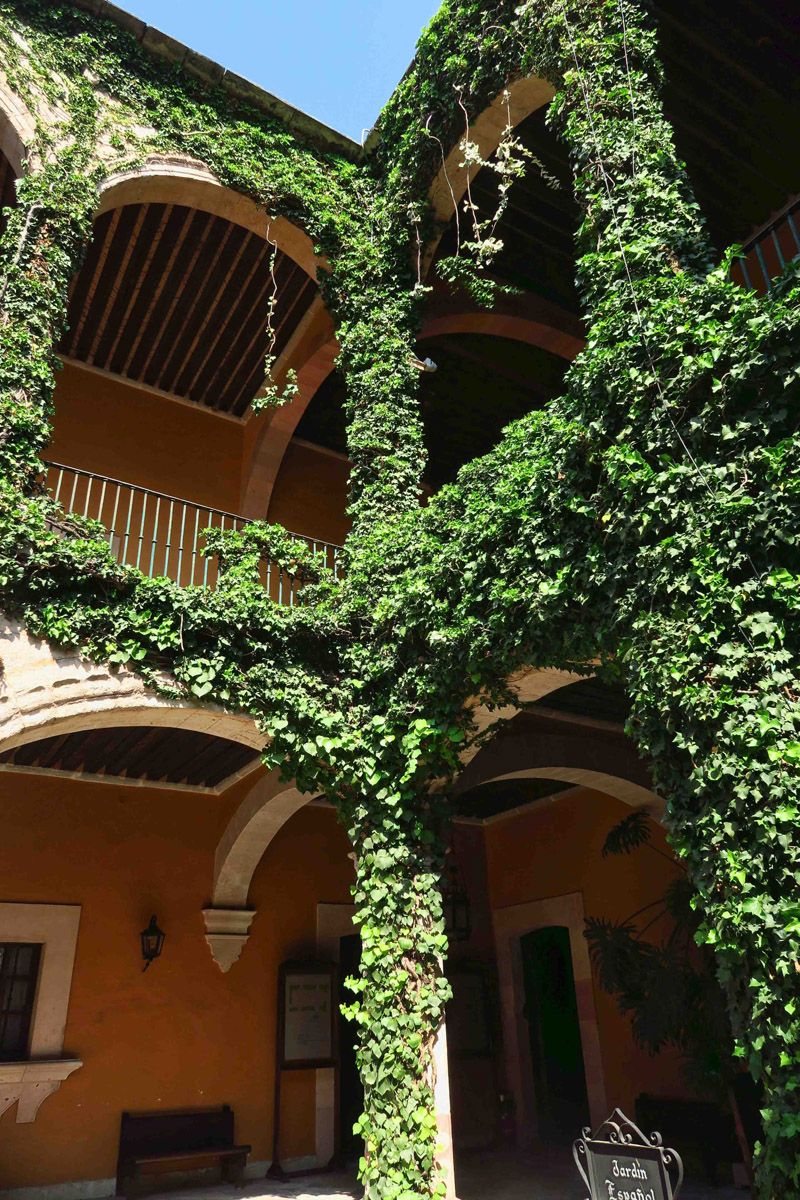







Oh my…that church!
Such opulence; I’m almost ready to convert 🙂
Hasta,
Box Canyon Mark
Next time we are sailing together, you can help me cook 🙂 Really looks like you are having a great experience there. Hope the Spanish is improving!
That hacienda was exquisite! I’d compare that fee to the fees charged for the various tours available at Hearst Castle. You got an amazing bargain!
Will you become an adventurous home cook after all the cooking classes???? 😉
Your Spanish class is certainly a much better cultural intercambio than just language skills. Will you be doing the cooking at home now?
Lisa and Jeff — As much as I am enjoying the cooking class, I don’t see myself fire-roasting chilies over the Winnie stove. LOL! Though you never know…leaving good Mexican food behind is gonna be tough!
Thanks Suzanne for doing this, love your blog and have been with you for three years now. Due to your comment, I wanted to suggest a terriffic substitute for a wide angle lens is a cellphone camera in pano mode. The possibilities are endless. I rate the quality of mine 3½ to 4 stars on a scale of 5. Don’t be afraid to over-pan, you can always crop what you don’t need later.
Thanks for the great comment, Russ, and thanks for sticking with me for three years! I forget about the pano feature on my phone, so thanks for the reminder. Sadly, my iphone5 takes some of the worst photos I have seen, but you are right, it’s a fitting substitute when in a place like La Valenciana!
Wondering about the word “ex-hacienda”. Many years ago, I toured Fords home and Edisions and probably others and a castle in Canada and they were not referred as ex-mansions or ex-castles.
I hope the field trips help with the language barriers, I never took a language class in school and would always be frustrated by clients speaking their native language in front of me.
Teri — Great question! I wondered about this as well. I am having lunch tomorrow with someone who owns a B&B, Casa de Espiritus Alegres just outside of Guanajuato. His Inn is located in one of the “ex-haciendas.” I will ask and report back…
Hi, Teri, I did ask the B&B proprietor yesterday, and I was told that this is in part because some of these “ex-haciendas” are actually businesses now, such as their B&B. The “Ex-hacienda” is part of their business address, so the “ex” is used as further intel in locating the business, so people know they are looking for a business inside what was formerly an hacienda. Interesting…
Mmmmmmmm. The chile rellenos look really good. I love those things. I did not know about separating the eggs, beating the whites and etc. Who knew?
I thought the same thing as Lisa about the cost of a tour of Hearst Castle compared to the $1.50 you paid to visit the ex-hacienda. No comparison!
La Valenciana is amazing!
I have not thought about field trips in years but your mention of them brought back a flood of memories and recalling the associated excitement. Thanks for sharing…..that church is incredible!
School field trips ending with yeasty suds? Yum! Loved this post filled to the brim with fun outings around the city you are currently inhabiting. I had to chuckle at this…”I don’t suffer from claustrophobia…until I can’t breathe”. Sounds like me gasping for breath during annual physical’s at my doc’s. I’m usually panting like a mad dog by the time the nurse comes into to the closet sized room they stick patients in. Wow! La Valenciana! I peek is good; I can’t imagine sitting in front of those alters for too long a spell. So enjoyed the wonderful garden tour at Ex-hacienda…and thanks for the explanation of the “ex” part. Great post! 🙂
Finally some internet I can rely on. I have so many of your posts to catch up on. I am still amazed at the opulence of the Mexican churches. We found gold-leaf displayed in many we toured throughout Mexico. We also toured the hacienda and loved all the various gardens. What an adventure you are having Suzanne!